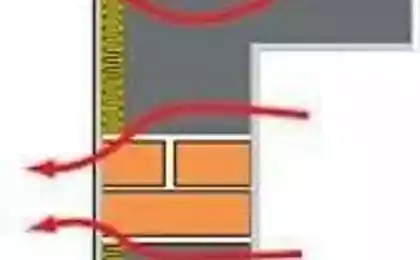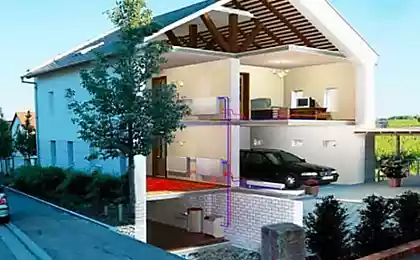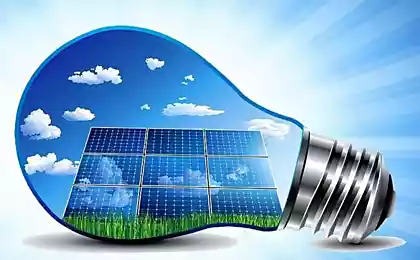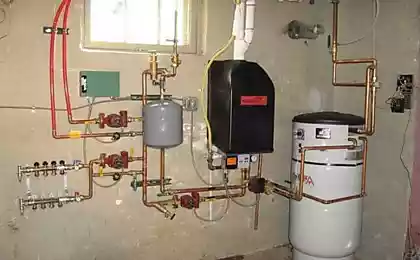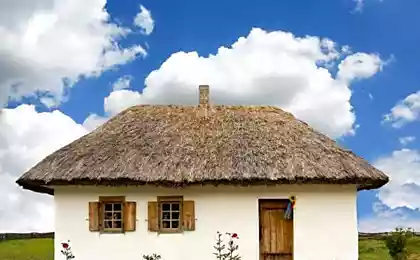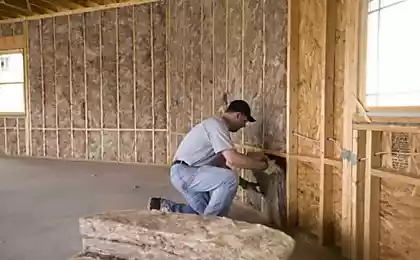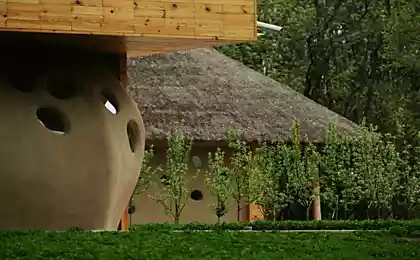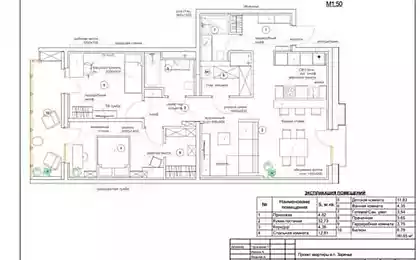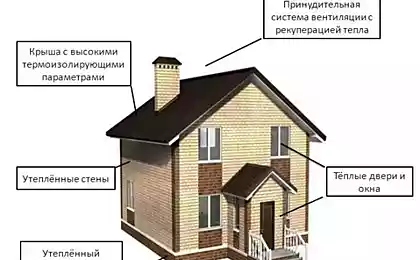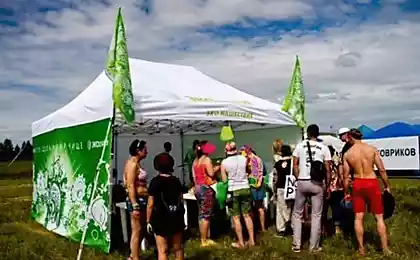719
Passive ECO house: construction without thermal bridges
Thermal bridges (or "bridges") in the building envelope have a significant impact on the energy efficiency and thermal comfort. This effect may be relatively small in buildings that are not very well insulated. Conversely, buildings with good quality insulation – energy efficient and passive houses, the impact of thermal bridges on the energy balance may be significant.

The passive house standard recognizes the importance of thermal bridges and the significance of their impact on the energy efficiency of structures. The passive house standard requires a device for continuous thermal shell, i.e. building construction without cold bridges. The only way to ensure radical energy efficiency and a comfortable climate.
What is a thermal bridge?
A thermal bridge is an element or a lack of insulation or less insulation compared to adjacent to this element/place areas of the thermal building envelope. This means that in this position ensures the path of least resistance ("bridge") to heat passing through the building envelope. In cold climates through this specific place will be lost for extra warmth. In hot climates, the thermal bridge will allow you to enter the building from the unwanted extra heat.
What are the different types of thermal bridges?
There are two basic types: geometric and structural.
Geometric thermal bridges are not associated with a discontinuity or a decrease in the thickness of the insulation. They arise there and then, when the geometry of the thermal shell leads to an increase in heat loss at certain places. A simple example: external corner of a building. Here the outer zone of the heat losses are greater than the corresponding internal area of the thermal shell.
Typical places geometric thermal bridges:
Constructive thermal bridges.
This type of thermal bridge is easier to understand. If something breaks (interrupts) the insulating layer, we can definitely talk about the cold bridge. In other words, some part, some sort of "inclusion" into the shell of the building, which is characterized by greater heat conductivity than the main insulation is used – heat bridge.
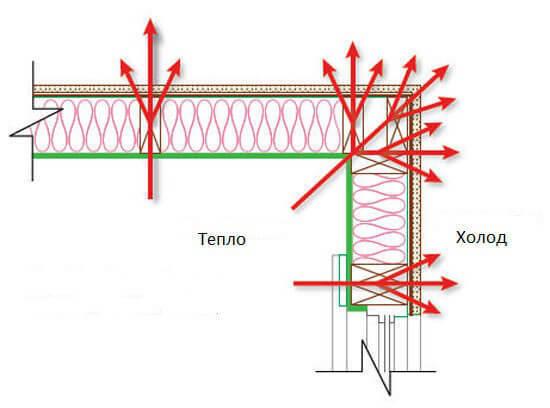
Traditional places of thermal bridges:
When designing passive houses the heat loss of any structural thermal bridges must be calculated and taken into account.
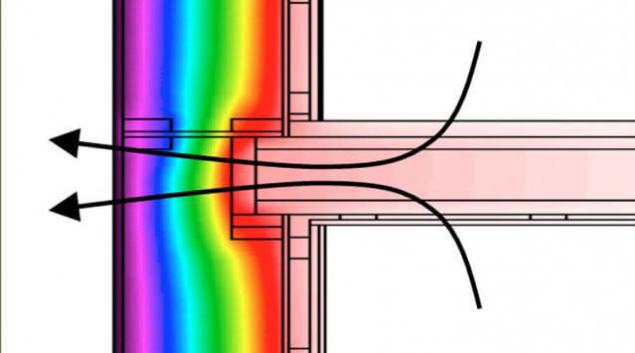
The subtypes of thermal bridges
And geometric, and structural thermal bridges can be broken down into further subtypes as follows:
Why thermal bridges are a problem?
As we have noted, thermal bridges are not a problem for low-quality or poorly insulated buildings. There, and without great loss of heat, a lot of other shortcomings. If we are dealing with a well insulated building, especially passive house, thermal bridges is important. If the building has extremely low heat losses, thermal bridge may add a significant percentage share of these losses. In addition, the presence of bridges creates significant risks associated with the transfer of moisture through building structures.
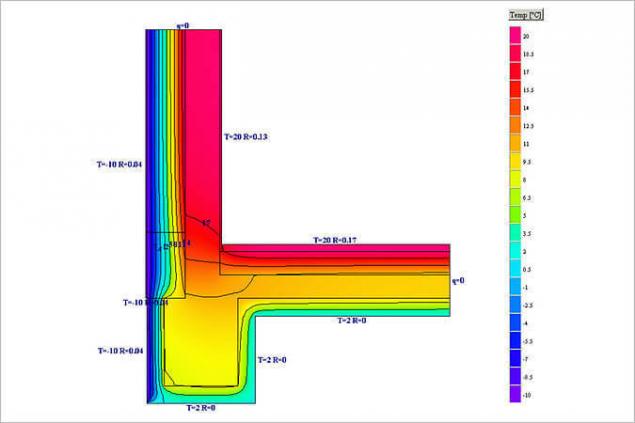
Select five potential problems with thermal bridges.
1. The loss of heat. Thermal bridges are a weak point in the building envelope and, thus, can lead to significant heat loss. This reduces the buildings energy efficiency and increases heating costs.
2. Overheating in the summer. Thermal bridges the heat flow in the summer this can lead to undesirable additional heating of the premises.
3. The cold inner surface. In a place where heat escapes through the thermal bridge, the interior surface temperatures will drop, creating a "cold spot". Relative humidity the surface will be thereby increased. This creates a risk of condensation on the inner surfaces, which can lead to mold formation. The result can be as cosmetic defects, and risks to human health.
4. Cold spots in the fabric of the building. Thermal bridges can lead not only to the formation of cold areas on the internal surfaces, they can equally cause a temperature drop in the appropriate places in the thickness of the building structures. Same thing here: the condensate drops, there is mold. Over a long period of time damage to the structures may become significant.
5. Risks to health and comfort. Cold spots on internal surfaces of premises cause thermal discomfort and draught. In the case of condensation, the more the formation of mold, the quality of indoor air will deteriorate. Humidity and mold can cause problems with people's health.
What is a construction without thermal bridges?
It is well known that in a passive house thermal envelope should be continuous.
For passive house construction without thermal bridges is considered to be such if the calculations of heat loss through all thermal bridges does not increase the total heat loss in the building. The package design of passive houses (a necessary tool for modeling passive buildings) – very "conservative" program that can say a little "overstates" the calculated heat loss of the building. Therefore, even if some of the heat loss through thermal bridges (primarily geometric) remain, indicators of heat when properly designed can "fit" into the norm.
The calculation of all thermal bridges of the building will usually be very time-consuming. Instead, the passive house standard offers a pragmatic approach:
If the design of the building from the very beginning we keep in mind the need to create a project and a building without thermal bridges, perform this task relatively easy. But that's exactly what should be high-quality passive house. After all, no designer of the passive house does not come to mind, for example, have a balcony, "punching" concrete slab thermal shell of the building.
The passive house standard requires a construction without thermal bridges to ensure that he declares: radical energy efficiency and exceptional consumer service.
published
Source: www.effdom.ru/thermal-bridge-free

The passive house standard recognizes the importance of thermal bridges and the significance of their impact on the energy efficiency of structures. The passive house standard requires a device for continuous thermal shell, i.e. building construction without cold bridges. The only way to ensure radical energy efficiency and a comfortable climate.
What is a thermal bridge?
A thermal bridge is an element or a lack of insulation or less insulation compared to adjacent to this element/place areas of the thermal building envelope. This means that in this position ensures the path of least resistance ("bridge") to heat passing through the building envelope. In cold climates through this specific place will be lost for extra warmth. In hot climates, the thermal bridge will allow you to enter the building from the unwanted extra heat.
What are the different types of thermal bridges?
There are two basic types: geometric and structural.
Geometric thermal bridges are not associated with a discontinuity or a decrease in the thickness of the insulation. They arise there and then, when the geometry of the thermal shell leads to an increase in heat loss at certain places. A simple example: external corner of a building. Here the outer zone of the heat losses are greater than the corresponding internal area of the thermal shell.
Typical places geometric thermal bridges:
- The external corners of the walls.
- The junction of the cornice and the wall.
- Around window and door openings.
Constructive thermal bridges.
This type of thermal bridge is easier to understand. If something breaks (interrupts) the insulating layer, we can definitely talk about the cold bridge. In other words, some part, some sort of "inclusion" into the shell of the building, which is characterized by greater heat conductivity than the main insulation is used – heat bridge.

Traditional places of thermal bridges:
- Rafters that pass through the thermal contour of the building to support the eaves (or for decoration)
- Wooden racks/ceiling (frame), terminating insulation
- Cantilever structure, passing through the thermal shell.
- Jumper that interrupt the insulation.
- The gaps left between insulation boards — sloppy insulation.
When designing passive houses the heat loss of any structural thermal bridges must be calculated and taken into account.

The subtypes of thermal bridges
And geometric, and structural thermal bridges can be broken down into further subtypes as follows:
- Linear thermal bridges: the cold bridge of a certain length, for example, jumper.
- Point thermal bridges: thermal bridges in some points, for example, dowels/fasteners for attachment of insulation, connection of inner and outer structures.
- Repeating thermal bridges: thermal bridges at regular intervals, for example, the studs placed between them with insulation.
- Unit thermal bridges...
Why thermal bridges are a problem?
As we have noted, thermal bridges are not a problem for low-quality or poorly insulated buildings. There, and without great loss of heat, a lot of other shortcomings. If we are dealing with a well insulated building, especially passive house, thermal bridges is important. If the building has extremely low heat losses, thermal bridge may add a significant percentage share of these losses. In addition, the presence of bridges creates significant risks associated with the transfer of moisture through building structures.

Select five potential problems with thermal bridges.
1. The loss of heat. Thermal bridges are a weak point in the building envelope and, thus, can lead to significant heat loss. This reduces the buildings energy efficiency and increases heating costs.
2. Overheating in the summer. Thermal bridges the heat flow in the summer this can lead to undesirable additional heating of the premises.
3. The cold inner surface. In a place where heat escapes through the thermal bridge, the interior surface temperatures will drop, creating a "cold spot". Relative humidity the surface will be thereby increased. This creates a risk of condensation on the inner surfaces, which can lead to mold formation. The result can be as cosmetic defects, and risks to human health.
4. Cold spots in the fabric of the building. Thermal bridges can lead not only to the formation of cold areas on the internal surfaces, they can equally cause a temperature drop in the appropriate places in the thickness of the building structures. Same thing here: the condensate drops, there is mold. Over a long period of time damage to the structures may become significant.
5. Risks to health and comfort. Cold spots on internal surfaces of premises cause thermal discomfort and draught. In the case of condensation, the more the formation of mold, the quality of indoor air will deteriorate. Humidity and mold can cause problems with people's health.
What is a construction without thermal bridges?
It is well known that in a passive house thermal envelope should be continuous.
For passive house construction without thermal bridges is considered to be such if the calculations of heat loss through all thermal bridges does not increase the total heat loss in the building. The package design of passive houses (a necessary tool for modeling passive buildings) – very "conservative" program that can say a little "overstates" the calculated heat loss of the building. Therefore, even if some of the heat loss through thermal bridges (primarily geometric) remain, indicators of heat when properly designed can "fit" into the norm.
The calculation of all thermal bridges of the building will usually be very time-consuming. Instead, the passive house standard offers a pragmatic approach:
- If the external psi-values (the coefficient of loss through the thermal bridge Ψe) linear thermal bridge equal to or less than 0.01 W / MK, there is no need to calculate it. There still will be some losses, but they are insignificant, even by the standards of a passive house. There are standard structural elements (e.g., anchors, dowels, etc.) that have already been designed for this requirement, tested and certified, and can be used without any further calculations.
- Point thermal bridges are structures without thermal bridges with the exception of cases when they are created as a result of application of material with high thermal conductivity, such as steel.
- If the potential cold bridge overlaps the insulation thickness two-thirds the insulation thickness of the other surface to calculate the thermal bridge is not necessary.
- Repeating thermal bridges (e.g., rack frame) count in the calculation of the coefficient of thermal conductivity (U) of the respective design.
- Thermal bridges related to window and door openings, are considered in the calculation of thermal conductivity of Windows and doors.
If the design of the building from the very beginning we keep in mind the need to create a project and a building without thermal bridges, perform this task relatively easy. But that's exactly what should be high-quality passive house. After all, no designer of the passive house does not come to mind, for example, have a balcony, "punching" concrete slab thermal shell of the building.
The passive house standard requires a construction without thermal bridges to ensure that he declares: radical energy efficiency and exceptional consumer service.
published
Source: www.effdom.ru/thermal-bridge-free
